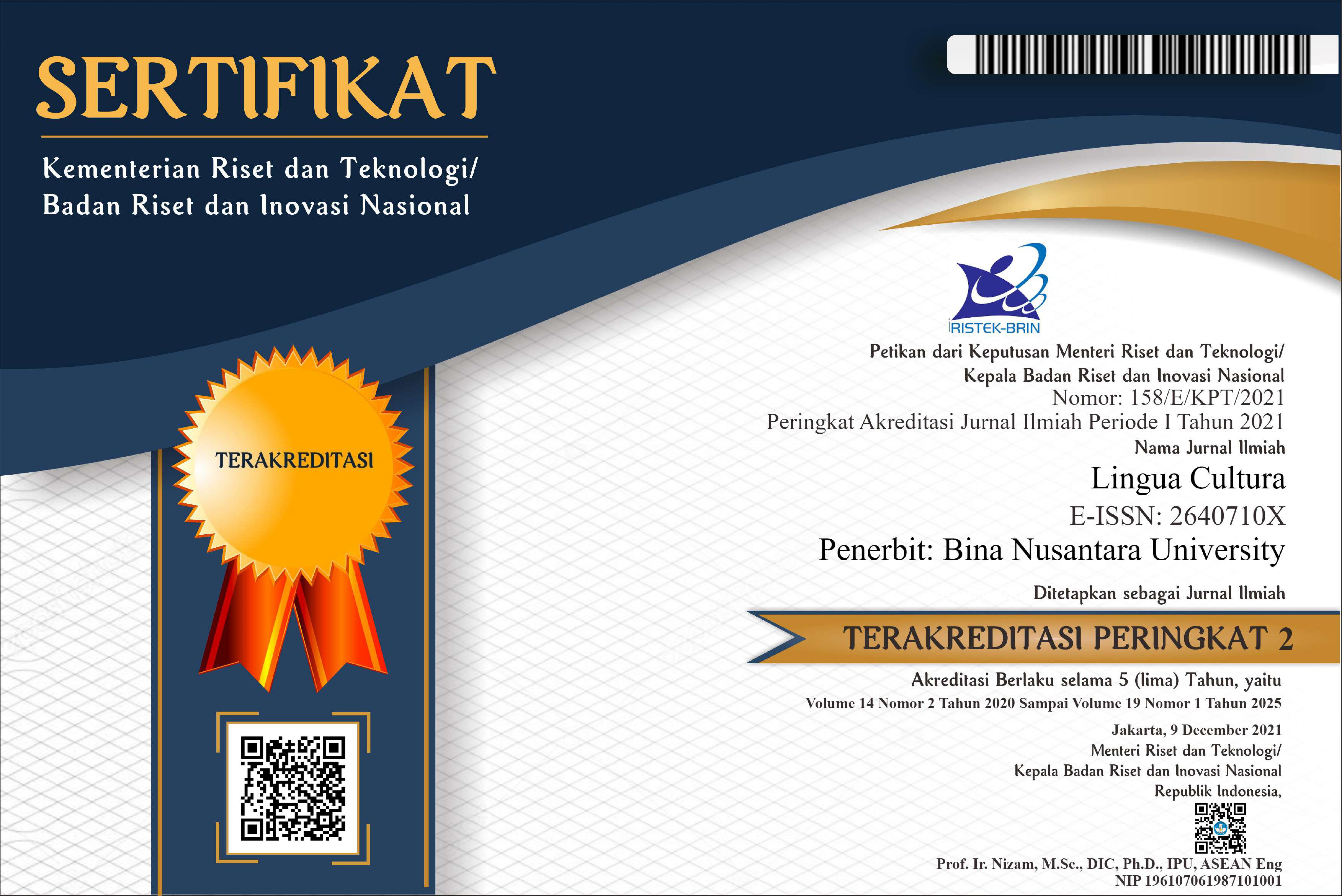Akulturasi Unsur Kungfu Tiongkok dalam Pencak Silat Betawi
DOI:
https://doi.org/10.21512/lc.v9i1.754Keywords:
Pencak Silat Betawi, Chinese Kungfu, acculturationAbstract
This study aimed to examine the influence of acculturation of Chinese Kungfu elements on Pencak Silat Betawi. The study used qualitative method and observation with interview and literature study by looking up Betawi and Pencak Silat on Batavia literature. Research finds out that the origins and influence of acculturation of Chinese Kungfu in Pencak Silat Betawi can be seen from a reciprocal relationship between the Chinese community and Betawi through the exchange of knowledge between Chinese martial arts champion and Betawi champion, or brought directly by Chinese Muslims as Master Ong and Kwee Tang Kiam. In addition, there are elements of acculturation both in naming or some movements adopted from Chinese kungfu as Chinese way in Maen Pukul Sabeni that uses two fingers (index and middle), the use of symbols that are closely related to Chinese culture symbols in the logo of Pencak Silat Sabeni, respect technique with Baoquan Li shape as in Mustika Kwitang, and so on.Plum Analytics
References
Betawi, Suku. (n.d.). In Jakarta.go.id. Retrieved from
http://www.jakarta.go.id/web/encyclopedia/detail/3842/Betawi-Suku
FuChunjiang. (2012). Asal Mula Simbol-simbol Keberuntungan China. Jakarta: Elex Media Komputindo.
Giyanto. (2014, September 5). Etnis Betawi. Retrieved
from http://jakartapedia.bpadjakarta.net/index. php/Etnis_Betawi
Kiong, L. Y. (1960). Ilmu Silat, Sedjarah, Theorie dan
Practijk. Malang: Penjedar.
LiXiang. (2013). 东南亚华侨华人对中华武术 的传播.
广东侨网电子刊物, 1-2. Retrieved from http://gocn.southcn.com/dzkw2010/hqyhr/4344/201307/
t20130717_401748.htm
Maryono, O. (2002). Pencak Silat in the Indonesian Archipelago (English). Yogyakarta: Galang.
Pusat Bahasa Departemen Pendidikan Nasional. (2008). Kamus Besar Bahasa Indonesia. Jakarta: Departemen Pendidikan Nasional.
Saputra, Y. A. (2002). Beksi, Maen Pukulan Khas Betawi.
Jakarta: Gunung Jati.
Suhandinata, J. (2009). WNI Keturunan Tionghoa dalam
Stabilitas Ekonomi dan Politik Indonesia. Jakarta: Gramedia.
Downloads
Published
Issue
Section
License
Authors who publish with this journal agree to the following terms:
a. Authors retain copyright and grant the journal right of first publication with the work simultaneously licensed under a Creative Commons Attribution License - Share Alike that allows others to share the work with an acknowledgment of the work's authorship and initial publication in this journal.
b. Authors are able to enter into separate, additional contractual arrangements for the non-exclusive distribution of the journal's published version of the work (e.g., post it to an institutional repository or publish it in a book), with an acknowledgment of its initial publication in this journal.
c. Authors are permitted and encouraged to post their work online (e.g., in institutional repositories or on their website) prior to and during the submission process, as it can lead to productive exchanges, as well as earlier and greater citation of published work.
USER RIGHTS
All articles published Open Access will be immediately and permanently free for everyone to read and download. We are continuously working with our author communities to select the best choice of license options, currently being defined for this journal as follows: Creative Commons Attribution-Share Alike (CC BY-SA)

















